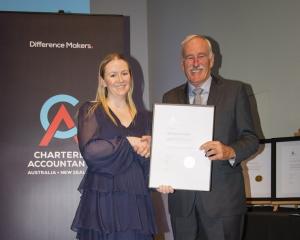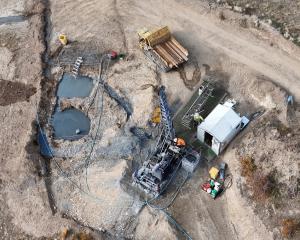The Reserve Bank is likely to be happy to see New Zealand’s employment market in such solid shape when figures are released this week, economists say.
Statistics New Zealand labour market figures, being released on Wednesday, are expected to show a stabilisation in the three months ended June. The unemployment level was expected to have stayed at 4.4% in the quarter, the employment rate was set to stay at 67.7% and the participation rate would remain at 67.7%.
ASB senior economist Mark Smith said the Reserve Bank appeared to be meeting its Policy Targets Agreement objectives in terms of "supporting maximum sustainable employment within the economy".
"We suspect we are getting close to an inflexion point for wage inflation, but the Reserve Bank will want to be sure wage growth will continue to strengthen before contemplating an official cash rate hike. To us, this still looks to be a late 2019 story."
The ASB expected overall Household Labour Force Survey employment to post a moderate 0.5% quarter-on-quarter increase in June. Annual employment growth would rise to 3.7%, an addition of more than 90,000 jobs, he said.
Other published employment measures, including filled jobs and paid hours from the Quarterly Employment Survey, should post moderate annual growth rates.
Still-strong growth in the working age population had made it possible for increasing labour demand to translate into more employment, Mr Smith said.
Earlier published figures from Statistics NZ confirmed the working age population increased by 0.5% in the three months ended June. Annual growth remained at 2.2%, an addition of just more than 80,000 people over the last 12 months.
The growth rate in the working age population was on a moderating trajectory, he said.
It peaked at just below 10,000 people in the September 2016 year and had broadly tracked the slowing in permanent and long-term immigration.
Growth in the working age population was expected to progressively slow to about 1.7% throughout next year, and 1.5% a year in 2020.
The strong demand for labour and prospect of firmer wages was expected to encourage strong attachment to the labour market, Mr Smith said.
ASB expected the participation rate and the employment rate to remain high over the next few years.
Capacity pressures within the existing labour market would gradually intensify and the unemployment rate should move to the low 4% range by the end of next year.
The unemployment rate was expected to remain at about nine-year lows, although the risks were tilted towards a lower unemployment rate if participation declined or the expected improvements in labour productivity failed to materialise, he said.
ANZ senior economist Liz Kendall said strong wage growth was expected in the June quarter, boosted by the higher minimum wage.
The increase in the minimum wage from $15.75 to $16.50 an hour was expected to add 0.2% to the private sector Labour Cost Index and 0.35% to the Quarterly Employment Survey hourly earnings.
There would be some spill-overs into pay negotiations for workers who were not on the minimum wage.
Further increases in the minimum wage and higher wage expectations would continue to boost wage inflation in coming years, she said.
The minimum wage was planned to be increased to $20 an hour by 2021.
"We expect higher wage expectations will continue to spill over into public sector pay settlements and negotiations more generally."
In total, ANZ expected those temporary factors would boost LCI wages by between 0.6% to 0.9% over the next few years, Ms Kendall said.
Wage and price inflation were expected to lift but the Reserve Bank was still likely to remain cautious.
Factors, including minimum wage increases, higher oil prices and exchange rate depreciation were muddying the inflation outlook.
"In this environment, we expect the Reserve Bank will focus on trend inflation which is expected to continue increasing only gradually.
"It will be looking to see broad-based, persistent increases in inflation pressure, consistent with future inflation close to the target midpoint."












